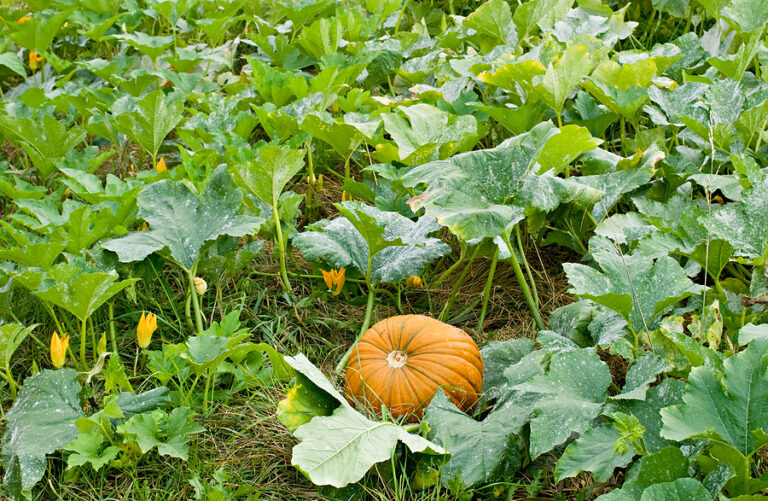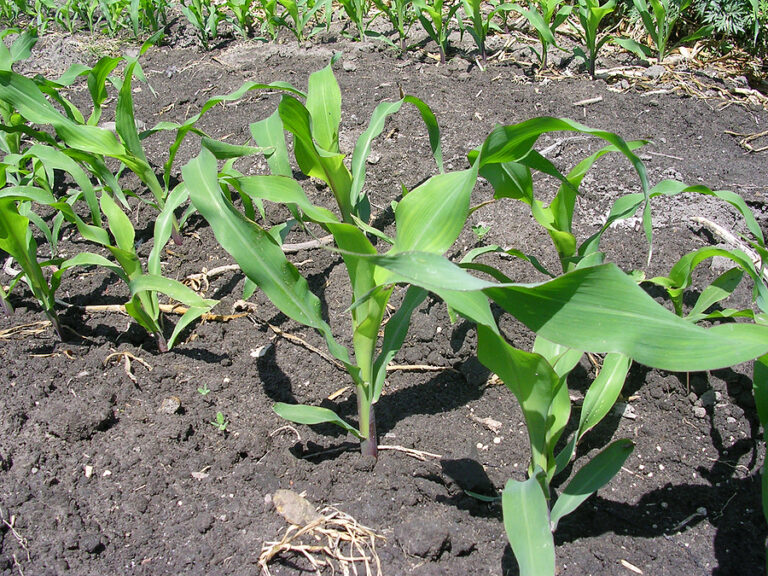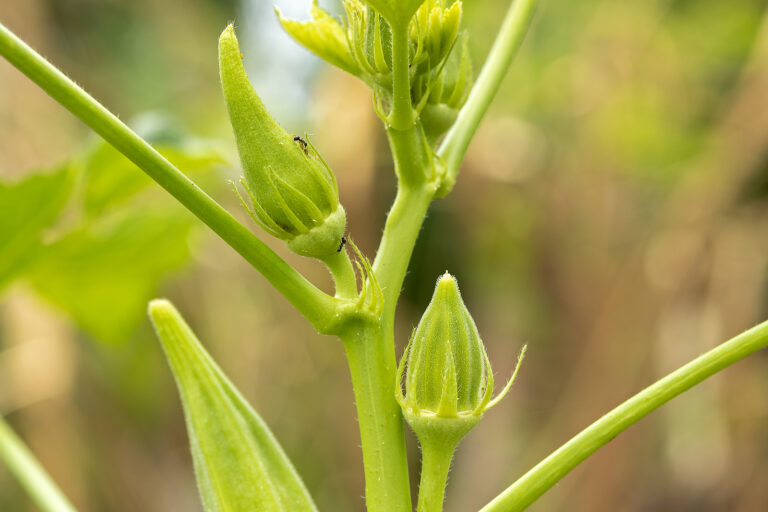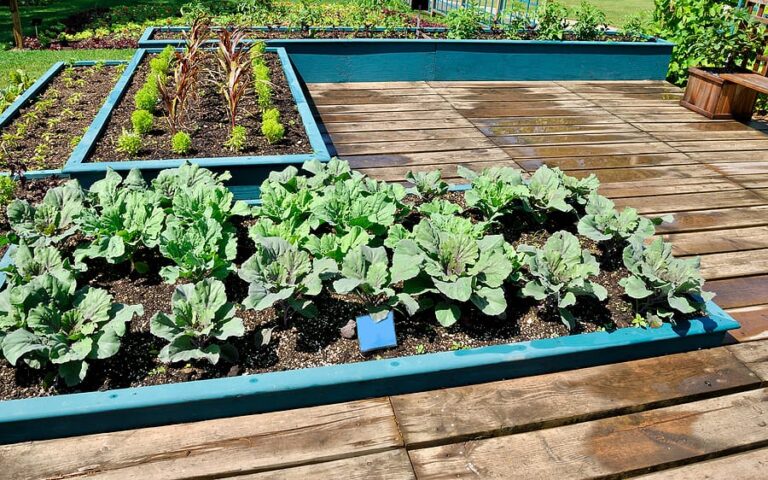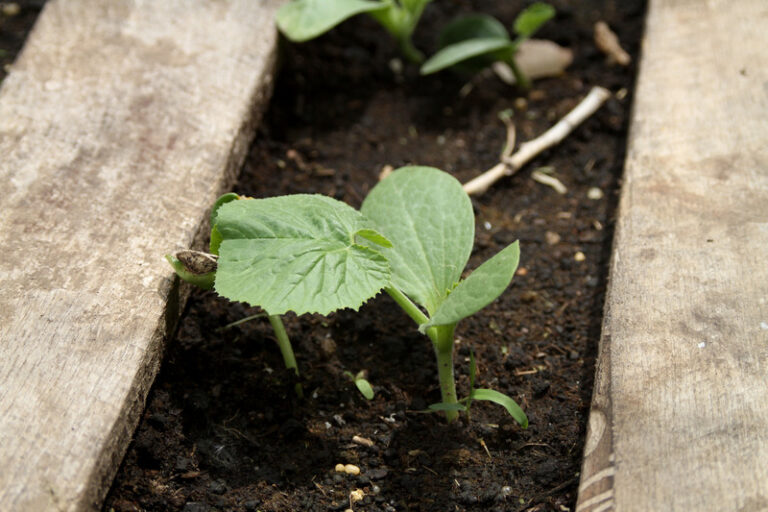How Plant Roots Grow
The health of a plant depends upon its roots. The yield of vegetables and fruits depends upon roots.
Roots supply water and nutrients to a plant. Roots also support and anchor a plant to the soil.
A root originates at the lower portion of a plant embryo or seedling. Root tips and tiny root hairs—which are not always visible to the naked eye–gather and absorb food and water from the soil. Larger roots—which are easily seen—store nutrients and water and transport them to the upper parts of the plant.
Tools for Vegetable Gardeners at Amazon:
- A.M. Leonard Straight Rake with Ash Handle
- All-Steel Nursery Spade with D-Grip Handle
- 4-Tine Spading Digging Fork with D-Handle
- Digital Soil pH Meter Outdoors Greenhouse
- Earthwise Handheld Electric Fertilizer Spreader
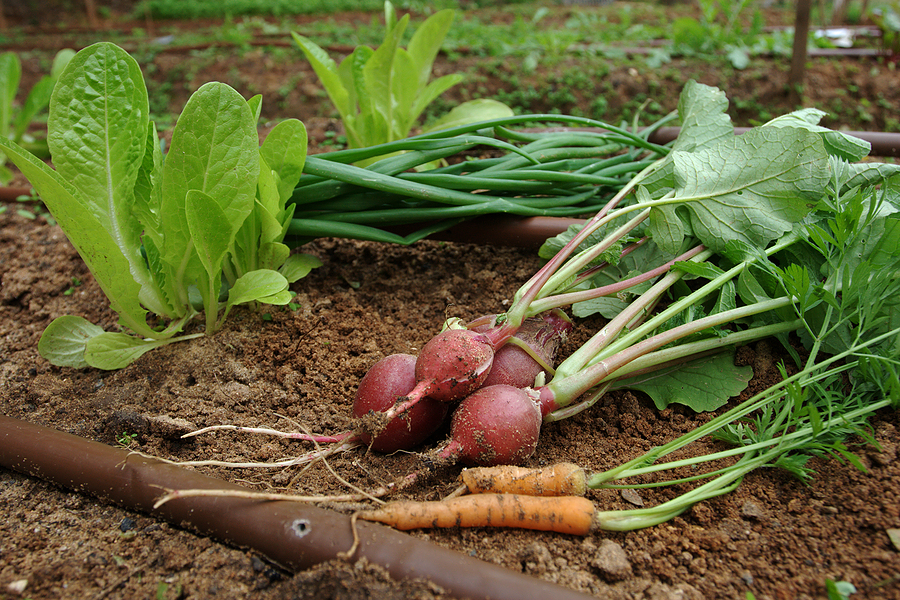
How roots develop
When a germinating seed sprouts, a root emerges from the lower portion of the seed and begins to grow straight down. This initial root is called the taproot or primary root. The primary root can grow several inches or more into the soil even before the plant’s developing shoot emerges aboveground.
A taproot can remain as a plant’s dominant root throughout the plant’s life; this is the case with carrots, spinach, and dandelions. Or, in some plants, the taproot can be replaced by fibrous roots—a mass of slender roots that look like a string; this is the case with corn and onions.
Some plants develop lateral or side roots—roots that branch out from the original taproot; this is the case with tomatoes.
Later, as some plants mature, they sprout what are called adventitious roots; those are roots that grow from stems, runners, and even leaves. Strawberries grow adventitious roots from runners.
How roots feed plants
Roots hold plants in place, anchoring them to the soil. But the most important function of roots is to collect water and nutrients from the soil and to help the plant grow.
Root tips and root hairs–the youngest and most tender parts of roots—continually venture into the soil looking for water and food. Water and nutrients are absorbed by the root tips and hairs and carried to the stems and leaves through hollow cells called the xylem. The pumping of nutrients and water from the roots to the stems and leaves is a result of a plant’s food-making process called photosynthesis which is powered by light.
Dissolved sugars including glucose sugar which is the basic building block of plant cells and other materials produced in the leaves and shoots circulate back down to the roots and through a second system of hollow cells called phloem. The sugars combine with nitrogen and other nutrients to supply the energy that roots need in order to grow and function.
How soil fungi and bacteria interact with roots
The roots of some vegetables and other plants may share a beneficial or symbiotic relationship with some soil fungi and bacteria.
Mycorrhiza is a structure that combines the mycelium of a fungus and the root of a plant. The fungus absorbs dissolved minerals—particularly phosphorus—from the soil and passes it over to the plant root; the plant root, in return, passes sugars and other organic compounds produced by the plant to the fungus. This is a symbiotic relationship known as a mycorrhizal association.
Particular kinds of soil bacteria live in the roots of many plants in the legume family, such as beans and clover. When bacteria infect a plant root a round swelling called a nodule can form. Bacteria in the nodule consume some of the sugar produced by the plant; in return, nitrogen gathered from soil air by the bacteria is converted into nitrogen compounds that the plant root can absorb and use to feed the plant. This process is called nitrogen fixing. These bacteria are called nitrogen-fixing bacteria.
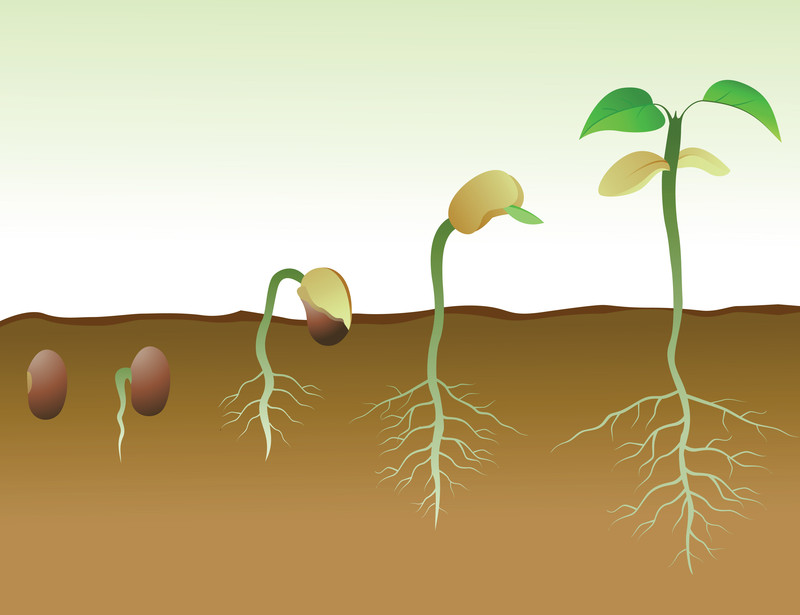
Planning your garden for plant root growth
Think about plant root growth when planning your garden. Be sure your planting beds contain plenty of organic materials such as compost and decomposed leaves to ensure strong root and plant growth.
Plant roots require loose, well-drained soil for optimal growth. Vegetable and fruit crops require strong, healthy roots to be most productive and most flavorful.
Soil rich in organic matter with good tilth—tilth means the soil is loose and crumbly and easy to dig–is essential for all plant growth and especially vegetables and fruits.
Good soil contains 50 percent air space. Air space in the soil allows for increased diffusion of oxygen. Oxygen is essential for the growth of both roots and soil microbes that enrich the soil. Carbon dioxide which is exuded by plants roots and must escape to the soil surface; this is made possible by soil with plenty of air space.
Preparing planting beds for root growth
When preparing your planting beds turn or loosen the soil and add organic matter such as aged compost to ensure the soil is loose and well-drained; this ensures there is plenty of air space for root growth. Compost-rich soil allows rain and irrigation water to easily reach roots, but also to drain down past roots ensuring plant roots do not drown.
Prepare planting beds that are both deep enough and wide enough for roots to grow. Good tilth should extend at least 2 feet down and 2 to 3 feet to either side of each plant. That does not mean each plant should be allowed that much space in the garden; roots of closely spaced plants—sometimes called intensive planting–can easily co-exist as long as they have good soil to grow through.
A mounded or raised bed is an excellent way to ensure plant roots get plenty go growing space. To make a raised or mounded bed turn the soil to a foot deep—about the length of a shovel or spade blade—and then add soil from the ground surrounding the new bed and compost to raise or mound the bed another 6 to 12 inches. A planting bed 18 to 24 inches deep will accommodate the root depth of most vegetable and small-fruit crops. A bed 24 to 36 inches wide will accommodate the width of crop root growth.
Space needed for optimal vegetable crop root growth
You will find the depth of these roots hard to believe; but these depths and widths of root growth are documented in the work of Nebraska researcher John E. Weaver. Seldom will we allow vegetable crops roots to reach their potential, and, of course, soil structure will affect root growth.
- Cabbage roots can grow to 2 feet deep and 2 feet out from the stem.
- Lettuce roots can grow to 3 feet deep and 2 or more feet out from the plant stem.
- Tomato roots can grow 3 to 4 feet deep and 2 to 3 feet out from the stem.
- Sweet corn roots can grow to 4 feet deep and 4 feet out from the stem.
- Carrots roots can grow to 6 feet deep and 2 feet out from the stem.
- Beets roots can grow to 9 feet deep and 4 feet out from the stem.
Related articles:
Garden Planning Books at Amazon:


